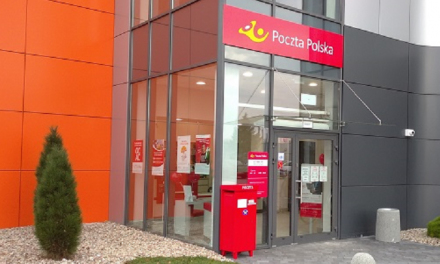
Transforming Pos Malaysia
Marten Buettner, independent postal consultant, provides a framework for successful postal transformation and explains how Pos Malaysia has embarked on a major transformation programme. History of postal transformation
Extensive postal transformation started more than 20 years ago. Europe was the first continent to see posts transform themselves from bureaucratic state owned organisations to market driven postal companies.
Within Europe, the Netherlands and Germany were the first countries that created a political framework to allow their posts to become competitive companies. Dutch Post and Deutsche Post eventually followed the strategy of a global integrator. Posts organizations such as Italy and Austria followed the strategy of a regional / service champion whereas others decided to concentrate on fulfilling the national Universal Service Obligation (USO).
Whatever the ultimate strategy, the companies that were successful concentrated on restructuring their core business first.
At Deutsche Post, for example, there were four distinct phases in the overall transformation process. First Deutsche Post restructured its national mail, parcel and retail business. That laid the foundation for the next phase which was the expansion of the business geographically. The third phase was expansion into different businesses with a strong focus on logistics. The last phase was to create superior value for its shareholders.
One might think that diversifying away from the core business is the right strategy considering the now obvious decline in mail volumes. It is interesting; therefore, that both Dutch Post and Deutsche Post have recently put more emphasis on the core business of national mail. Dutch Post actually sold its logistics activities in 2006 in order to focus on the mail and express businesses which are now being operated as separate entities. Deutsche Post sold its banking division Postbank. Both companies now have a much stronger emphasis on the national mail business than before.
Concentrating on the core postal business is even more relevant for those posts which have not so far embarked on a major transformation process. Only if they successfully restructure their core business do they earn the right to expand into other businesses or regions.
The transformation framework
The transformation framework outlined in this section is suitable for all posts starting a transformation programme. It is a pragmatic approach that in its application considers the specific situation of the post undertaking the transformation.
Develop masterplan
–Make the case for change – Why
It has to be clear to all stakeholders (employees, shareholders, customers, public) why it is necessary to transform. Is it because of a financial crisis, or because the basic operational processes are not sufficient, or because customers are not in the focus? There are many reasons for transformation and therefore a clear analysis and description of the why is necessary. This also includes a statement about what is different from any previous transformation programmes.
–Define strategic direction and transformation goals – What
The next step is the definition of the strategic direction at the corporate and SBU level for a specific period of time. Based on this strategic direction the transformation goals have to be defined. In considering general goals such as improving service, increasing revenues, reducing costs, strengthening HR capabilities or enhancing image the company has to define and prioritise those goals which are relevant for the specific situation of the company. These goals should be made specific and measurable, for instance “Grow revenue in core business by 10%”.
–Establish transformation portfolio – How
The real work starts with defining the initiatives which are necessary to achieve the transformation programme. A pragmatic way to achieve sustainable results in a reasonable timeframe is a mixture of a top down and bottom up approach. Usually the many initiatives or ideas in a company can be a basis for the transformation. The bottom up approach is to evaluate which of the initiatives and ideas support the transformation goals and how much they contribute to the goals.
But of course you should not purely rely on this bottom up approach because it might not yield sufficient results. Therefore a top down approach is also necessary. Based on the defined strategic direction and transformation goals the key initiatives for the transformation have to be elaborated from a top down perspective. For this also best practice examples of other postal organisations can be taken into account.
A matching of the bottom up and top down approach will then create a portfolio of relevant initiatives. These initiatives can be allocated to the transformation goals as well as to the relevant organisational unit in a transformation portfolio.
Prepare for execution
Developing a transformation plan is one thing but of equal importance is the establishment of concrete execution plans for each initiative with tasks, responsibilities and timeframes as well as a suitable organisation for driving the execution.
Make it happen
Now it is time for execution. The execution has to be supported by pragmatic reporting and monitoring tools. All relevant stakeholders of the transformation have to be engaged, involving proper communication of the progress. Last but not least is finding the right people to do the execution and to develop their execution capabilities.
FOCUS: Transforming Pos Malaysia
Pos Malaysia Berhad is the exclusive provider of mail services in Malaysia. With more than 175 years of existence it includes mail, courier, retail and other related businesses. In 1992 Pos Malaysia was corporatised and operates as a Government Linked Company (GLC).
The financial performance of Pos Malaysia was declining, with operating profit reducing from 109m Ringgit in 2005 to 82m Ringgit in 2009. The new management that came on board at the end of 2008 projected that by 2011 the company would face losses in a “business as usual” scenario. Management therefore developed a three year Transformation Master Plan which was approved by the Board in August 2009.
The starting point for the transformation was a clear strategic direction: concentrating on the domestic core business of mail, courier and retail in the next three years. The transformation was based on five pillars, creating FOCUS:
- Focus on customer needs: creating new solutions to meet ever changing customer demands.
- Operational excellence: leveraging the latest technological advances to improve efficiency.
- Concentrate on core business: anchoring on profitable business and doing away with the contrary.
- Unleash talent and capabilities: developing and nourishing talents to nurture the future leadership team.
- Strengthen image: refreshing the look and feel of postal outlets and simplifying processes for customer satisfaction.
A total of 39 initiatives were defined for execution in the three year transformation period. These include initiatives to increase revenues by introducing new products, initiatives to reduce costs and to improve service quality. The portfolio is supplemented by HR initiatives to develop talent and initiatives to enhance the image of Pos Malaysia supported by a complete rebranding of the company.
Mid 2011 is halftime in the execution of the 3 year transformation plan and a substantial performance improvement has already occurred. Compared to 2009 revenues have increased from RM903m to RM1,015m (+12.4%) and operating profit has risen from RM82m to RM106m (+29.3%). Other achievements include the introduction of an internet marketplace “PostMe.com.my”, service improvements such as D+1 coverage in delivery, reduced waiting times in postal outlets and call centre activities.
Lessons learned
The successful transformation programme of Pos Malaysia provides some lessons applicable to the wider postal industry:
- Goals: define clear case for change and transformation goals.
- Engagement and alignment: get major stakeholders on board before starting the transformation and align board, management and staff on transformation goals.
- Approach: combine a bottom up with a top down approach so as to build on existing initiatives but also on new ideas.
- Focus: less is more! Concentrate on a portfolio of initiatives that can be handled properly.
- Quick wins: show fast returns of the transformation with dedicated initiatives.
- Communication: define a communication plan adapted to different target groups.
In conclusion, posts have to evaluate their situation and define and execute transformation programmes which are relevant for them. In doing this, they can build on what other postal organisations such as Pos Malaysia have already gone through.
The Author
Marten Buettner was with Arthur D Little for 16 years. He became the global head of its Travel & Transportation practice comprising postal, railway and aviation. He moved on to work as a member of the executive board of an international company in the packaging industry as well as becoming a director at the European School of Management and Technology in Berlin. Since 2009 he has worked as an independent consultant in the postal industry and primarily supports Pos Malaysia in its transformation programme.
Marten can be contacted at [email protected]
This article was published in the June issue of Mail & Express Review. To subscribe to the magazine, click here.












